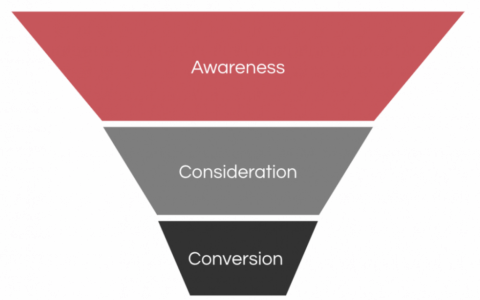Is there any other industry that is growing quite like SaaS (Software as a Service)?
A recent report, by BMC in September 2021, shared three staggering statistics:
- The SaaS market is currently growing by 18% each year
- By the end of 2021, 99% of organisations will be using one or more SaaS solutions
- Nearly 78% of small businesses have already invested in SaaS options
With so many like-minded companies appearing, competition to stand out is fierce. That’s putting it mildly. An analogy we often use here at Hallam is this: imagine getting all of these businesses together in a big room (a warehouse considering the amount of SaaS companies, in this case), turning the lights out, shutting the door, and asking everyone in that room to try and stand out.
How do you achieve that? Many of these businesses will be running the same ads on social media and Google. Many will have their Technical SEO down to a tee.
Many of you – yes, maybe even you reading this blog here – will probably agree that SaaS SEO or SaaS PR is a lot more challenging. How do you market and shout about something that has no physical presence, evolves constantly, and is not particularly ‘sexy’, despite how functional and useful it is?
The answer lies in your approach to Organic content marketing.
In this blog, we’re going to talk about – and hopefully demonstrate – how to create the perfect Organic strategy and showcase how SEO, Content, and PR work hand-in-hand to ensure that it is your SaaS company that is standing out in that dark room.

Don’t think about SaaS SEO. Don’t think about SaaS PR. Don’t even think about SaaS Social. Think about SaaS Organic
To successfully compete in the ever-growing digital world, the first step is to understand how SEO, Content, and PR all work together.
Focus on one individual function and you miss a trick. This is what we mean in practice:
- Keyword opportunity – the necessary research to discover ranking and search opportunities
- Blog – producing creative and engaging content that is built to rank for key and relevant search terms and keywords
- PR – driving relevant website links back to your website in order to build your website’s domain authority
- Amplification on social media and email marketing – driving traffic to your pages in a personalised and targeted manner
With that laid out, this is how each individual role plays its part in this strategy.
1) It all starts with nailing your market research
The first part of any successful process lies in the research, particularly in assessing your market, audience, competition and brand perception.
In addition to your existing resources, it’s important to consider who your online competitors are, keeping in mind these can sometimes be different to the competitors that the leadership team in your business may be aware of.
You need to work out who you will be competing with on social media and in the search engines.
A research tool like SEMrush is a great starting point. Using your own domain name, the SEMrush database will report on your main organic competitors based on the keywords your site is currently optimised for. This report will identify the keywords you have in common, the keywords your competitors are optimising for, and the competition levels of those competitors.
Your competitor list is so important, because if you don’t then take the time to review their ads, landing pages, content, domain authority, website experience etc, then it’s impossible to understand how to beat them. Here is a guide to identifying your online competitors.
How do you want customers to find you?
It harps on back to how you want to be perceived. In relation to building a SaaS Organic strategy, we’re talking specifically about what words and phrases potential clients and customers are using to find brands like yours.
A few simple questions will help you decipher this:
- What conversations are they having?
- How do they describe your offering?
- What questions are they asking?
- Which words give away intent and expected results? Learning to speak the language of your target market is key.
For a truly unified organic approach, sharing keyword research and landing page priorities with whoever is responsible for outreach and linkbuilding is vital.
This will ensure that the strategy benefits organic performance as a whole and that links aren’t being acquired solely to the homepage.
Full funnel keyword strategy focused on your SaaS client

Identify awareness/top of funnel keywords & content
This content will attract potential customers as they begin to research solutions to problems, and will often be in the form of guides, articles or resources.
At the top of the funnel, the user isn’t looking for a specific tool or solution, they are simply looking for help and guidance. This traffic is less likely to convert into a customer, but you can capture prospects via an email newsletter, content upgrade or retargeting pixel.
One potential SEO strategy for this point in the funnel could be to trigger your own company’s featured snippets.
For example, the search phrase “how to project manage a remote team” demonstrates a high level of intent and problem a user is experiencing.
In the Google search results, HydraCloud’s helpful content ranks top organically in the form of a featured snippet:
If you want to learn more, we’ve written a guide to triggering featured snippets.
Work out what the users in the middle of the funnel or consideration stage are searching
This content will capture users who have become aware of a solution to their problem, but prior to them researching specific products to meet those requirements.
At this point, you want to educate your potential buyer on benefits, integrations and so on – mapping keywords to your homepage, features pages, solution pages. They may be searching for something like “project management tools”.
A key thing to note here is that some of these keywords may serve results that are from sites that have posted round-ups of the best tools of that particular type or that are actually more informational content than product or features pages:
These middle funnel searches usually fall into one of the following types:
- Product category – Your most basic searches like “project management software”
- Product category comparison – “organisational planning software vs workforce planning software”
- Solution/industry – More specific searches that identify the buyer’s industry “project management tools for programmers”
- Features – Specific features that the user is looking for “project management tool with file sharing”
- Integrations – How the software plugs into other tools “Help desk software with Salesforce integration”
Build comparison content that helps you stand out against both direct and indirect competitors
At the bottom of the funnel, the conversion stage, the buyer is now fully aware of the problem they’re facing, the solution they will use to solve it, and likely some (or all) of the specific products that meet their needs. At this point you need to:
- Attract product-aware traffic
- Inject your SaaS product into the consideration set (if it isn’t already)
- Highlight the key features or considerations that make your product a better fit than competitors
- Differentiate your product category (and your specific product) from alternative solutions
These keywords generally fall into a few high-level buckets:
- Comparisons (X vs Y)
- Alternatives/competitors (Y Alternatives)
Read our guide on how to conduct expert keyword research for further information on the tools & techniques to use to get the most out of your keyword strategy.
And don’t forget to research search intent for your target terms (what pages are ranking well and so Google deems to be relevant for the user’s search). Don’t limit yourself by just going after the biggest volume keywords – make sure that they are relevant by viewing the search results in comparison to your SaaS product and the content you are planning to include on your website.
Another important point to note is that what brand managers or others who work in your SaaS company think your tool or platform should be referred to as can be very different to what your customer are actually searching for.
Finding a balance can be quite a challenge but backing up your SEO/content decisions with search volume data, and highlighting the opportunity that ranking for relevant keywords will bring in terms of leads, usually helps to assuage any worries about using certain words or phrases.
Once you have your keywords and content mapped out, use Moz’s on page SEO best practice guide to ensure your content is well-optimised.
And make sure you review the content that is ranking well on competitor websites for your target terms so you can benchmark and improve on that content in order to (hopefully!) move above them in the SERPs.
2) Crafting engaging blog content that is built to answer search queries
Now it’s time for the fun part.
You’ve got your data. You know what search terms and keywords your SaaS brand is targeting. You have spotted the gap your competitors have left waiting to be filled by you. Now it’s time to start creating engaging content.
And the beauty is that even though you’re a SaaS brand, the rules do not change.
Below are our six top tips to building content that stands out:
- Optimise your title in relation to your keyword opportunity – the phrase ‘does what it says on the tin’ springs to mind.
- Link to relevant sources – these include on your own page, like products, services, and other relatable blogs, as well as external sources
- Include data to add authority to your piece – add weight behind your messages
- Include comments and opinions from relevant individuals and stakeholders – these will come in handy when we discuss PR
- Inject tone of voice – you want your reader to enjoy reading the piece you’re writing and want to consume it
- Be sure to include the target keyword – but don’t cram. No one wants the word or phrase shoved down their throat
Short, sharp, snappy, to the point. Moving swiftly on.

3) Build your SaaS website’s authority through linkbuilding and Digital PR
Site authority is another cornerstone of any SaaS SEO strategy and essentially boils down to the number and quality of backlinks that you have pointing from other sites back to yours.
Building your backlink profile is hugely important, especially if you are a newer SaaS company, but you need to focus on quality links rather than quantity. You’ll be pleased to know we have produced a guide to what a bad link looks like when link building for SEO.
Linkbuilding tactics
When it comes to SaaS-specific linkbuilding, we have four practical recommendations for you to consider:
- Integration Partnerships – If your SaaS product integrates with other tools, you could connect with the companies your tool integrates with and see how you can get added to their directory for integrations.
- Strategic Partnerships – Maybe your platform doesn’t integrate with other tools directly, but if they’re used in conjunction with other tools then perhaps users could experience a better outcome. Back to blog writing for a moment. Write a blog post about this tip on your site and then reach out to the other companies you mentioned to see if they’d be willing to link to the piece you wrote about them and share it on their social media pages.
- Exclusive Data – SaaS products often collect a lot of really interesting data that can be structured and leveraged to provide value for others. Some of this data could be organised into interesting topics that help you tell a story on your site.
- It would also be worthwhile researching those “best tools for X” lists that I referenced earlier and seeing if your platform or software can get added to any relevant lists (which will likely include a link back to your site!)
Securing high-ranking coverage and links through Digital PR for your SaaS brand
There are a number of proven ways in which you can build links, most notably and sustainably by creating expert-led, useful content, and through Digital PR campaigns to generate coverage and links on relevant websites within your industry.
There are several ways of approaching this:
- Thought-leadership – expert commentary and long-form articles that are usually aimed at trade publications. They’re usually built around specific issues relating to the SaaS industry, its services, or its products. The technology market is huge, and we know the people behind Tesla, Microsoft and Amazon, but do you promote the brains behind your business? Your employees are the backbone of your success and your best asset, and channelling their opinions and ideas to the press is a great way to showcase the personality of your business.
- Whitepapers/eGuides – Visualise an even longer form of thought-leadership content. SaaS products and services filter in almost every industry in this digital-first world and businesses are, always, looking for insights from experts. Producing whitepapers and eGuides on particular topics – like on the future of the industry or the development of automation and new services, as an example – will set your company and experts as leading voices in the industry and a ‘go-to’ for businesses. This is a strong tactic for building your mail listing and generating sales leads. Maybe we will write another blog about this someday
- Foundational PR – a term used here at Hallam to describe the basics of PR. This can be as simple as sharing business and colleague updates through press releases and usually relates to new hires, new product launches, or new initiatives to shout about
- Newsjacking – while receiving hundreds of emails each day, journalists also use digital to seek answers to their enquiries. SaaS is a growing sector, one that journalists are increasingly showing an interest in. By using tools such as Twitter (#JournoRequest) and Response Source, you can pitch your business experts to be a small part of a wider story. Keep it simple, relevant and timely and this technique will prove to be very effective
- Creative campaigns – The holy grail of Digital PR – the big juicy pieces that utilise Storytelling, Creative, Tech, and Data to create a compelling piece that is Owned as well as Shared. These pieces contain interesting hooks, are data-led, and are built to ensure multiple numbers of journalists are linking back to you as the source when they run your story.
Think outside the box – don’t be afraid to target outlets that are not totally SaaS related. Outreach and pitch to HR blogs with an overview of your product and how it could benefit internal communications or IT publications who can tell their audience how your software will keep professionals ahead of the game.
Tools such as Buzzsumo, Mention and Answer the Public can help with planning great content. Check out more PR and social media tools here.
A perfect blend of all these PR tactics will support your SEO strategy and drive links back to your website from relevant news publications and sources – a significant contributor to the growth of your SaaS business’ domain authority and appearance for important search terms.
On to point four!
4) Implementing a thorough amplification strategy to make your content work harder
You’ve got your piece of informative and engaging content about the SaaS industry. You have repurposed and outreached it to secure quality and high-ranking links back to your home or service page. Job done and dusted, right?
Wrong. There’s still work to be done. That blog post and piece of PR will take your message so far, now we’re returning to your Owned channels to ensure that content is being amplified even further.
Read on for how:
- Social media – there’s one of two strands to this. The first is to use your social media channels to ensure you’re hitting your ‘direct’ audience. Owned social media channels are the optimum tool for showcasing your tone of voice and personality. They’re also a significant platform to utilise for building your industry expertise
- Employee advocacy – this is the second strand. No matter your brand, whether you’re a SaaS business, a clothing outlet, or even a food delivery service, people invest with people. Your audience has an affiliation with the brand because of its people and by implementing an employee advocacy strategy, you are ensuring your content and PR is being shared beyond just the business itself.
- Email marketing – still the prime platform for connection, driving ROI, and higher levels of engagement. Email is your most effective tool for personalisation and reaching your customers directly with your content.
Final thoughts
SaaS is a growing industry and one full of competition. Being able to stand out is fierce, particularly as the influence of digital marketing grows.
Instead of approaching Saas SEO or Saas PR in isolation, adopt an all-encompassing Organic strategy. With your Owned and Earned channels working in tandem, your SaaS business will be creating content that is informed by deep keyword research and with a primary objective and stage of the conversion funnel in mind.
While that content is yours to own, amplification is a key part of any organic strategy, specifically in relation to building website and brand authority and driving high-quality and relevant links back to your website.
By wrapping these four steps together in a fluid approach, you’re giving your SaaS business the best opportunity of standing out – even in a very dark room.







